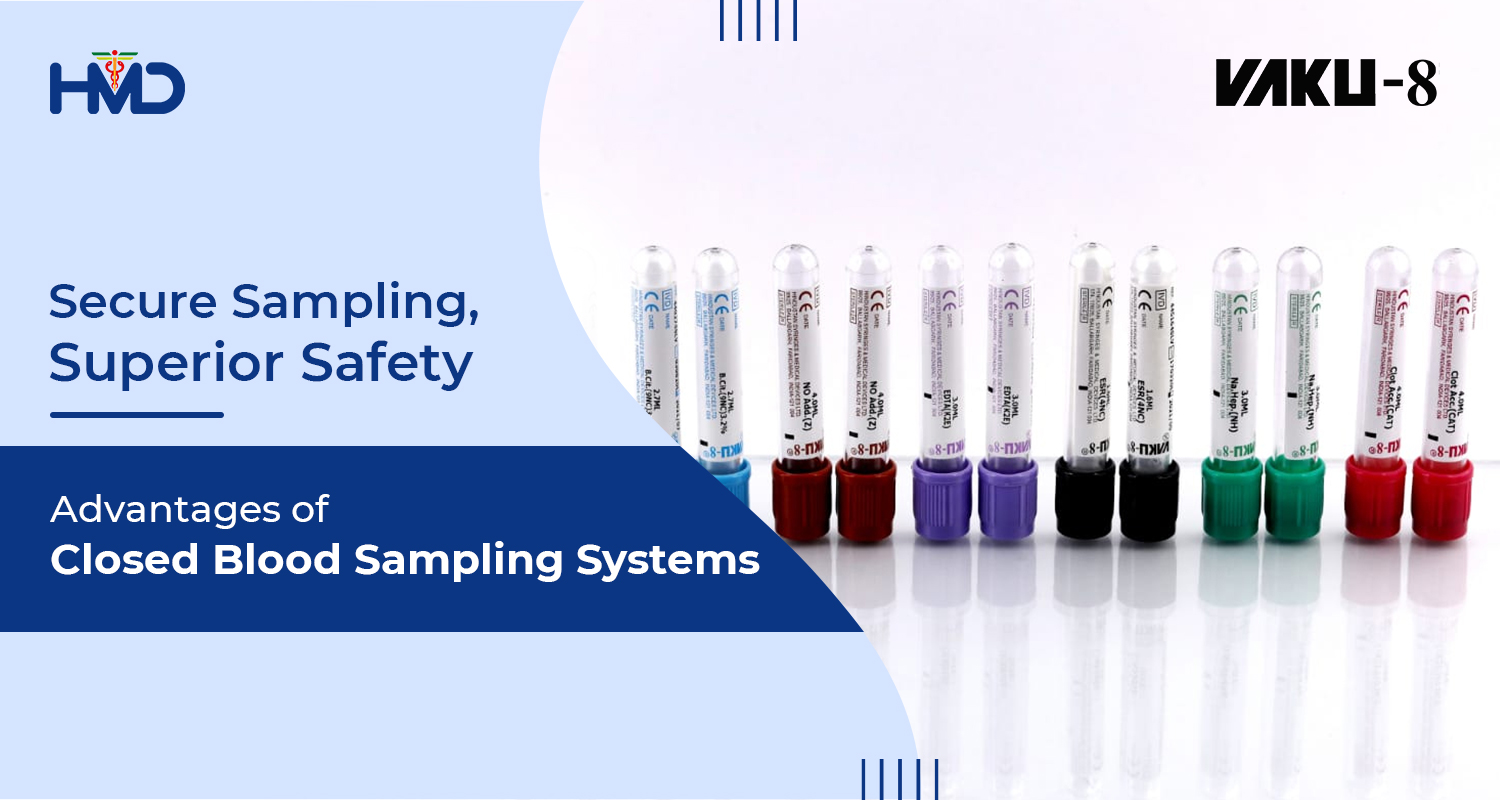

Blood sample collection is a fundamental process in healthcare that allows for diagnosing, monitoring, and treating patients. The accuracy and safety of this process impact patient care and health outcomes.
Traditionally, open systems that include needles and syringes are used for drawing blood samples. These, however, come with drawbacks like contamination risks, blood loss, and safety issues for healthcare professionals. As a result, the healthcare industry has seen a shift towards closed blood sampling systems, which are safer and more efficient.
What is a Closed Blood Sampling System?
A closed blood sampling system is a blood collection system that employs a vacuum extraction tube and a blood collection chamber. The vacuum extraction tube draws blood into the chamber, allowing it to be collected for testing.
When a blood draw is required, a syringe or vial can be attached to the blood collection chamber, and the vacuum extractor automatically fills it up. This system ensures that the I.V. line is not exposed to the open air.
Benefits of Closed Blood Sampling System
Some reasons why closed blood sampling systems are preferred over traditional open systems include:
1. Colour-Coded Tubes
Closed blood sampling system tubes are colour-coded based on their intended use. Each colour signifies the specific additive present in the tube, simplifying sample sorting and testing.
2. Reduced Infections and Contamination
The closed blood collection system uses a needleless design, bringing down the risk of catheter-related bloodstream infections. Additionally, it reduces the chances of contamination as it does not expose the I.V. line to air.
3. Safer for Healthcare Professionals
The needleless design and closed blood collection pathway reduce the risk of needlestick injuries. This protects healthcare providers from potential exposure to bloodborne pathogens and contributes to a safer working environment.
4. Better Diagnostic Accuracy
The system prevents the mixing of blood samples with I.V. fluids or air. This means samples accurately reflect the patient’s physiological state. As a result, screening results are more precise and facilitate informed medical decisions.
5. Allows Multiple Samples
The design of the closed blood sampling system allows for the collection of multiple blood samples without the need for numerous venipunctures or repeated arterial access. This efficiency minimises patient discomfort and prevents infections caused by repeated exposure.
In Conclusion
Closed blood sampling systems offer significant advantages over traditional blood collection systems and optimise patient care and safety in medical environments.
At HMD, we design medical equipment and accessories keeping safety in mind. With our 65 years of experience, our medical devices offer a superior, precise, and safe way of medication delivery and blood collection.
Explore the full range of HMD website today!

